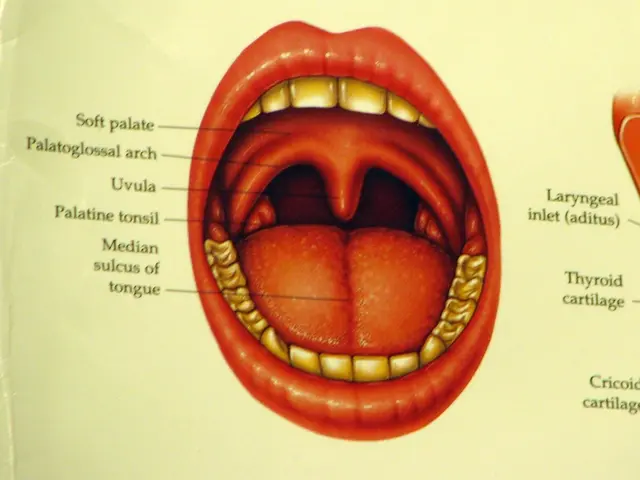Signs, symptoms, and potential complexities of pregnancies that occur following tubal ligation (a form of female sterilization)
Tubal ligation, a common form of birth control, is known for its high effectiveness, but it's not a guarantee. One potential risk is an ectopic pregnancy, which occurs when a fertilized egg implants in the fallopian tube instead of the uterus. Women who have undergone tubal ligation may have an increased risk of ectopic pregnancy, especially if they choose to reverse the procedure.
The success rates of tubal ligation reversal vary significantly, with approximately 50-80% of women able to conceive following surgery. The method of the original tubal ligation, the time elapsed since the procedure, the extent of tubal damage, and the woman's age are key factors influencing success rates. Procedures using clips or rings tend to have better reversal outcomes, while electrocautery or coagulation methods cause more extensive tubal damage. Shorter intervals between the original procedure and reversal, less damaged fallopian tubes, and younger women generally experience higher pregnancy success rates post-reversal.
About half of all pregnancies occur within the first six months after reversal surgery. However, there is a moderate risk of ectopic pregnancy after reversal, necessitating close medical monitoring. Women who have undergone tubal ligation reversal should be aware of the symptoms of ectopic pregnancy, which include abdominal pain, vaginal bleeding, shoulder pain, and fainting, in addition to the usual signs of pregnancy such as cravings, breast tenderness, missed periods, fatigue, nausea, and frequent urination.
In cases where ectopic pregnancy cannot be stopped with medication, surgery may be recommended. It's essential to seek immediate medical attention if any symptoms of ectopic pregnancy are experienced.
For women who are unable to conceive after tubal ligation reversal or for those with severe tubal damage, In Vitro Fertilization (IVF) may be a viable alternative. IVF bypasses the fallopian tubes entirely and may be recommended based on individual circumstances.
It's crucial to remember that tubal ligation involves cutting and tying off the fallopian tubes to prevent pregnancy. Complications of tubal ligation can include infection at the incision site, separation of the wound, incomplete healing, and more serious complications such as allergic reactions to general anesthesia, significant blood loss, and injury to an organ during surgery.
In conclusion, tubal ligation reversal offers a good chance of pregnancy, but it carries some risk of complications like ectopic pregnancy and requires careful follow-up. It's essential to be aware of the risks and symptoms of ectopic pregnancy if pregnancy occurs after the procedure. Anyone who suspects they are pregnant should take an at-home test and see a doctor for confirmation.
- Even though tubal ligation is highly effective, it doesn't completely eliminate the risk of certain medical conditions, such as ectopic pregnancy.
- Women who have opted for tubal ligation and decide to reverse the procedure may encounter increased risks, with a predictive increase in ectopic pregnancy.
- Success rates for tubal ligation reversal can range from 50-80%, but factors like method of original tubal ligation, elapsed time, tubal damage, and age play significant roles.
- In cases where clips or rings were used in the original procedure, the chances of a successful reversal are typically better than with electrocautery or coagulation methods.
- Shorter intervals between the original tubal ligation and reversal, less damaged fallopian tubes, and younger women often experience higher pregnancy success rates post-reversal.
- Approximately half of all pregnancies following tubal ligation reversal occur within the first six months, but there's a moderate risk of ectopic pregnancy, requiring close medical monitoring.
- Symptoms of ectopic pregnancy include abdominal pain, vaginal bleeding, shoulder pain, fainting, as well as common pregnancy signs like cravings, breast tenderness, missed periods, fatigue, nausea, and frequent urination.
- In cases where ectopic pregnancy cannot be managed with medication, surgery may be recommended, and immediate medical attention should be sought if any symptoms are experienced.
- For women who cannot conceive after tubal ligation reversal or have severe tubal damage, In Vitro Fertilization (IVF) might be an alternative, bypassing the fallopian tubes entirely.




